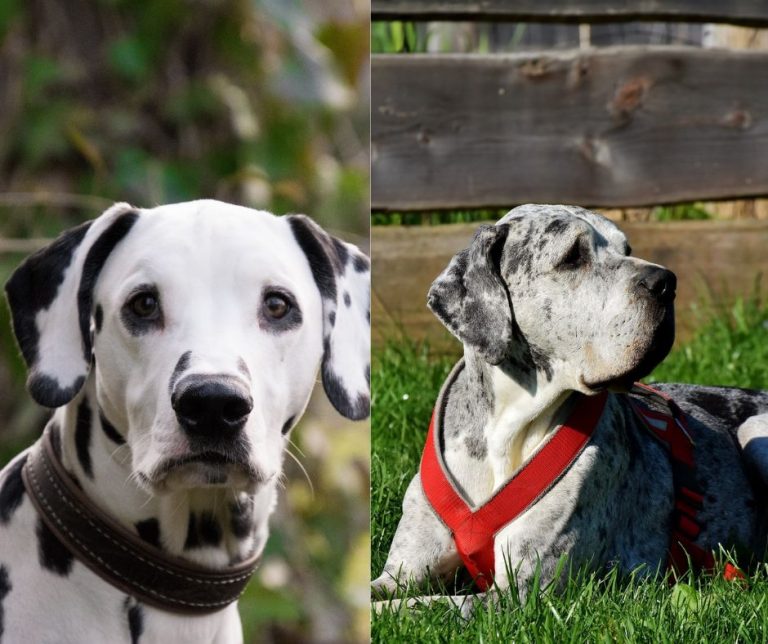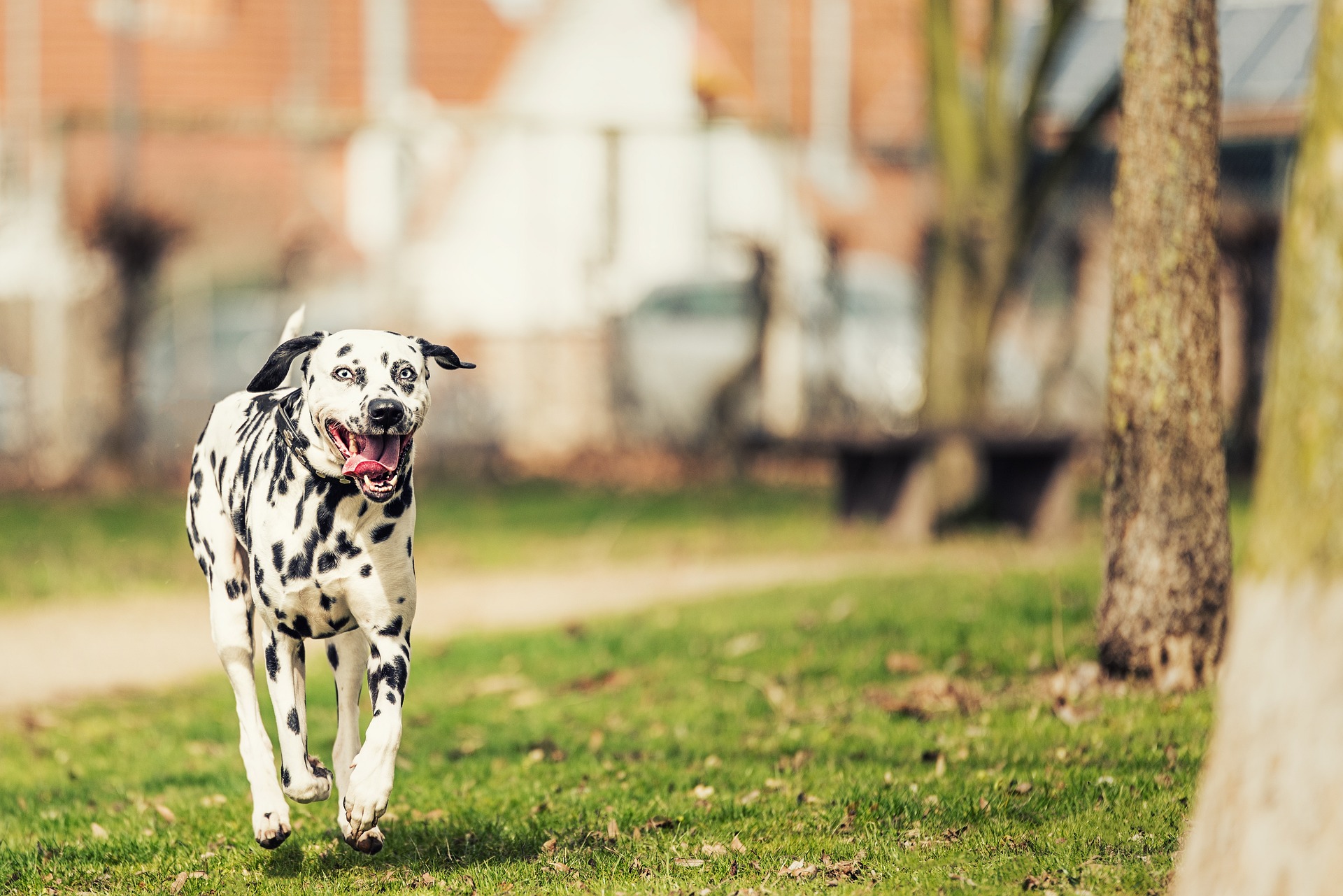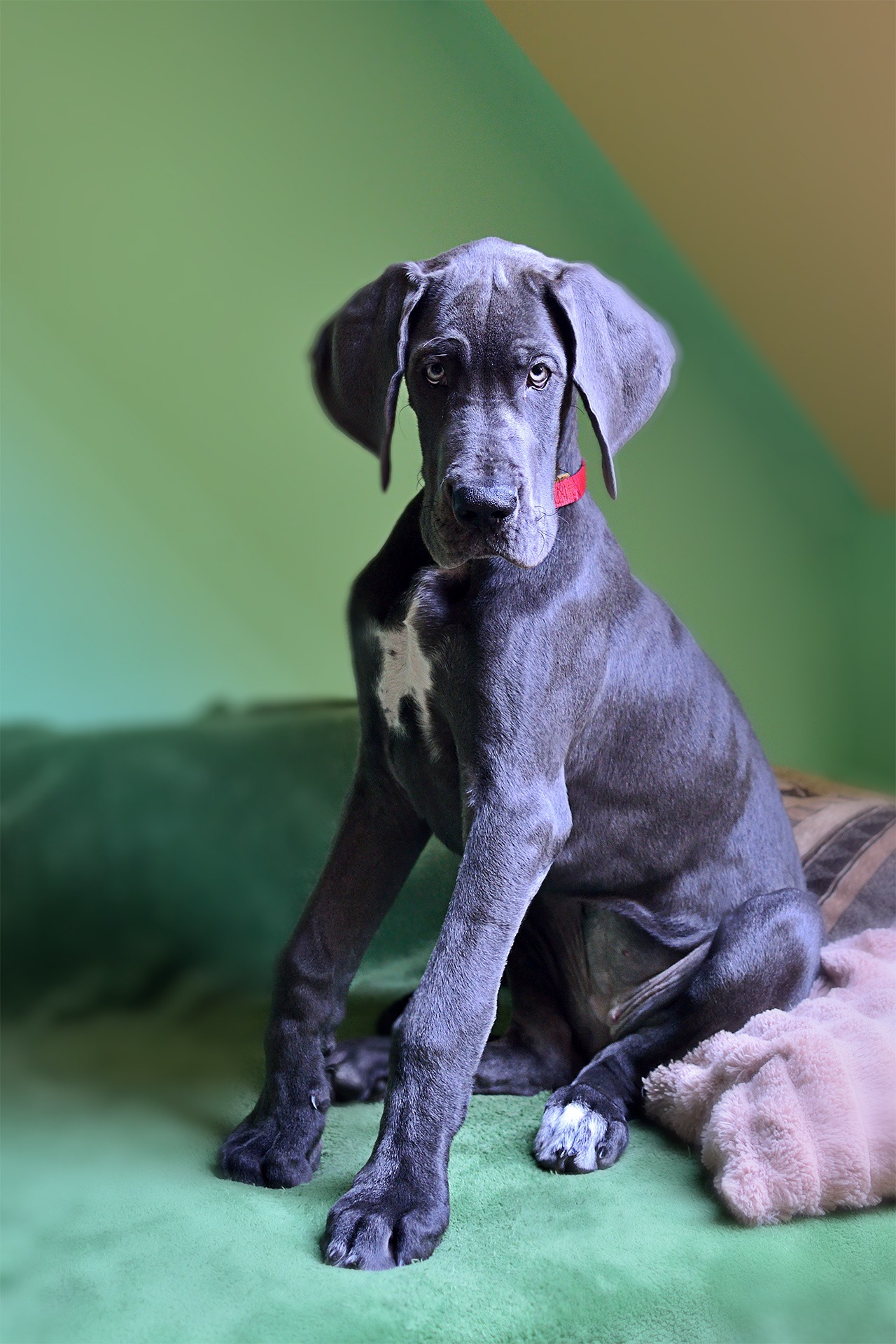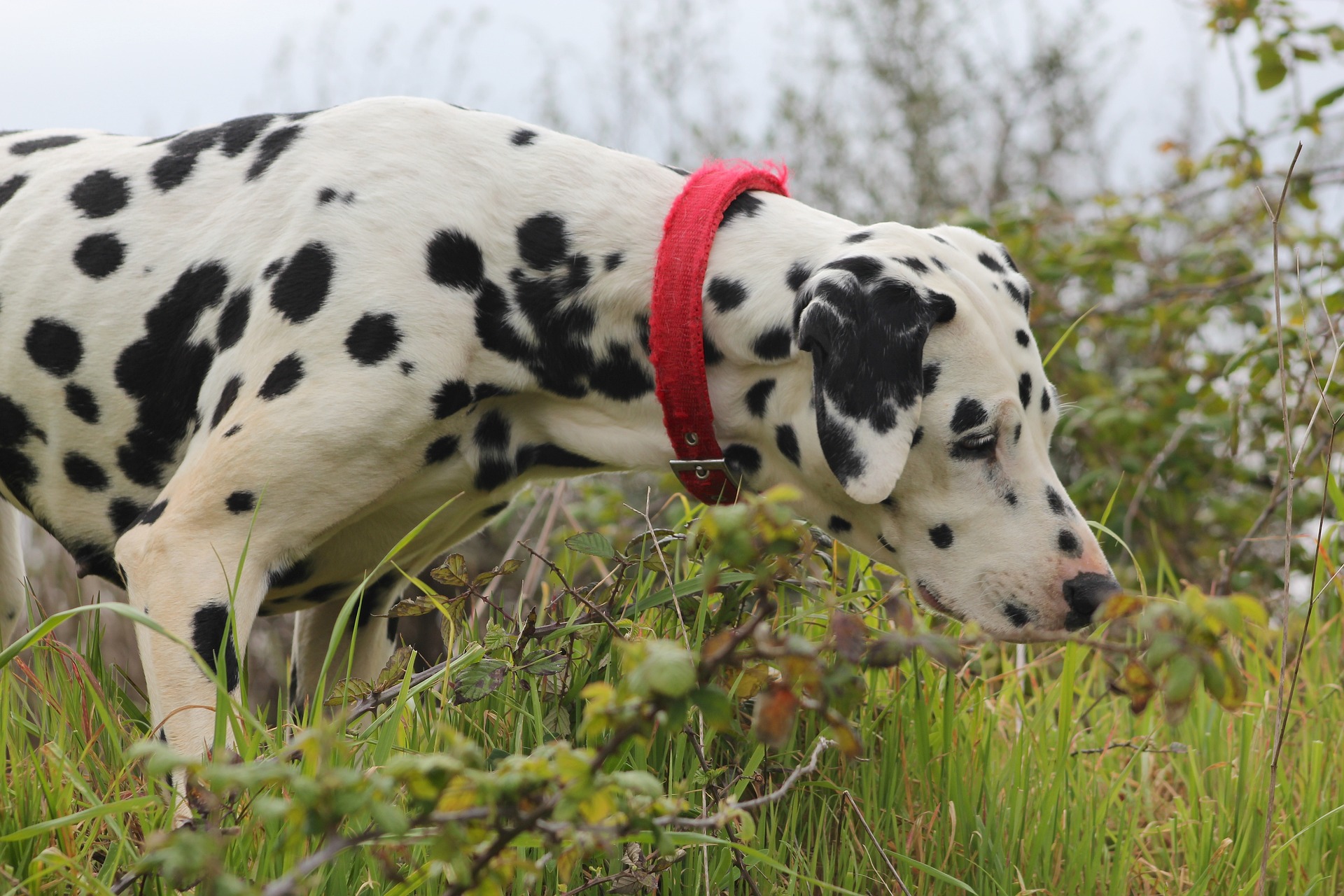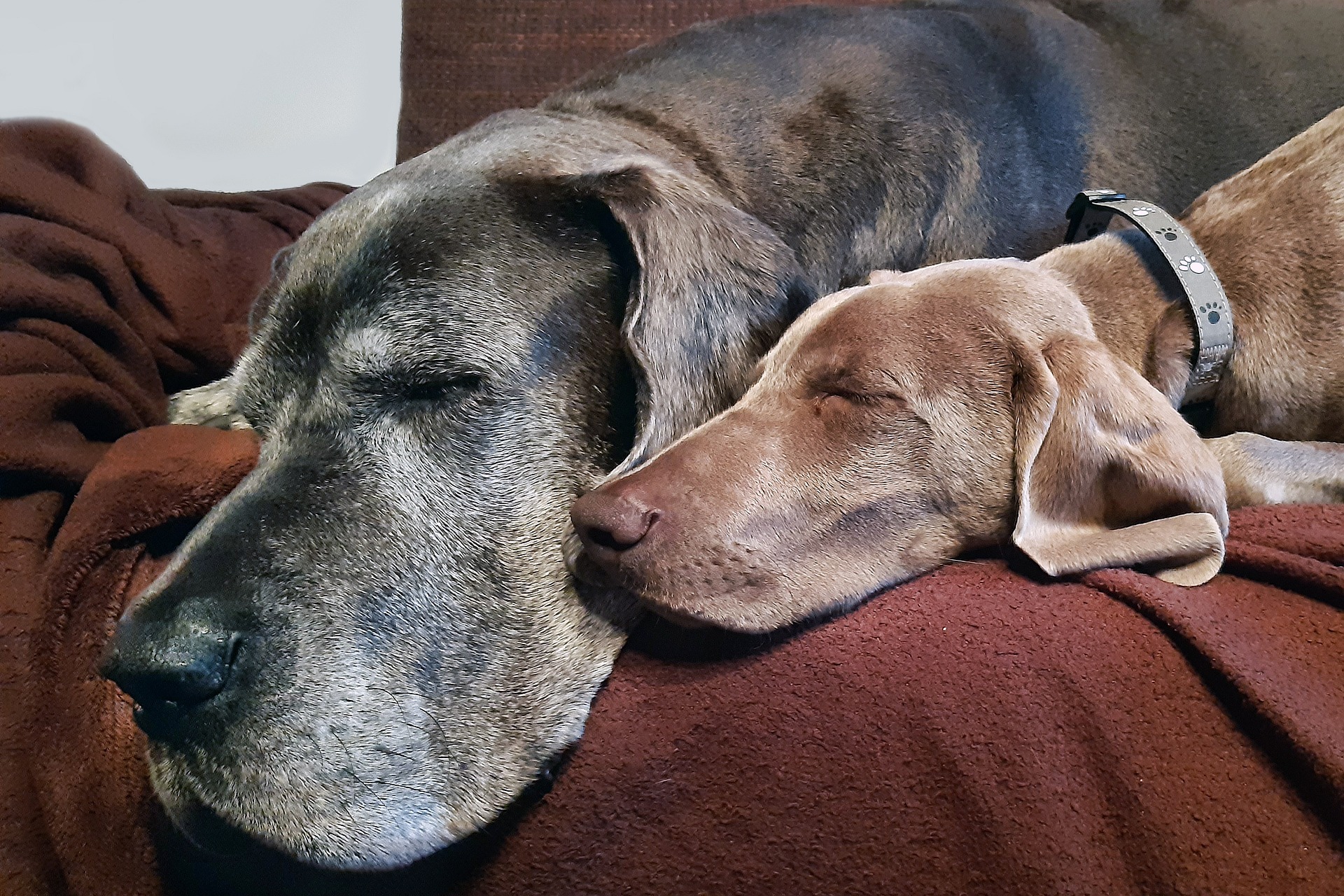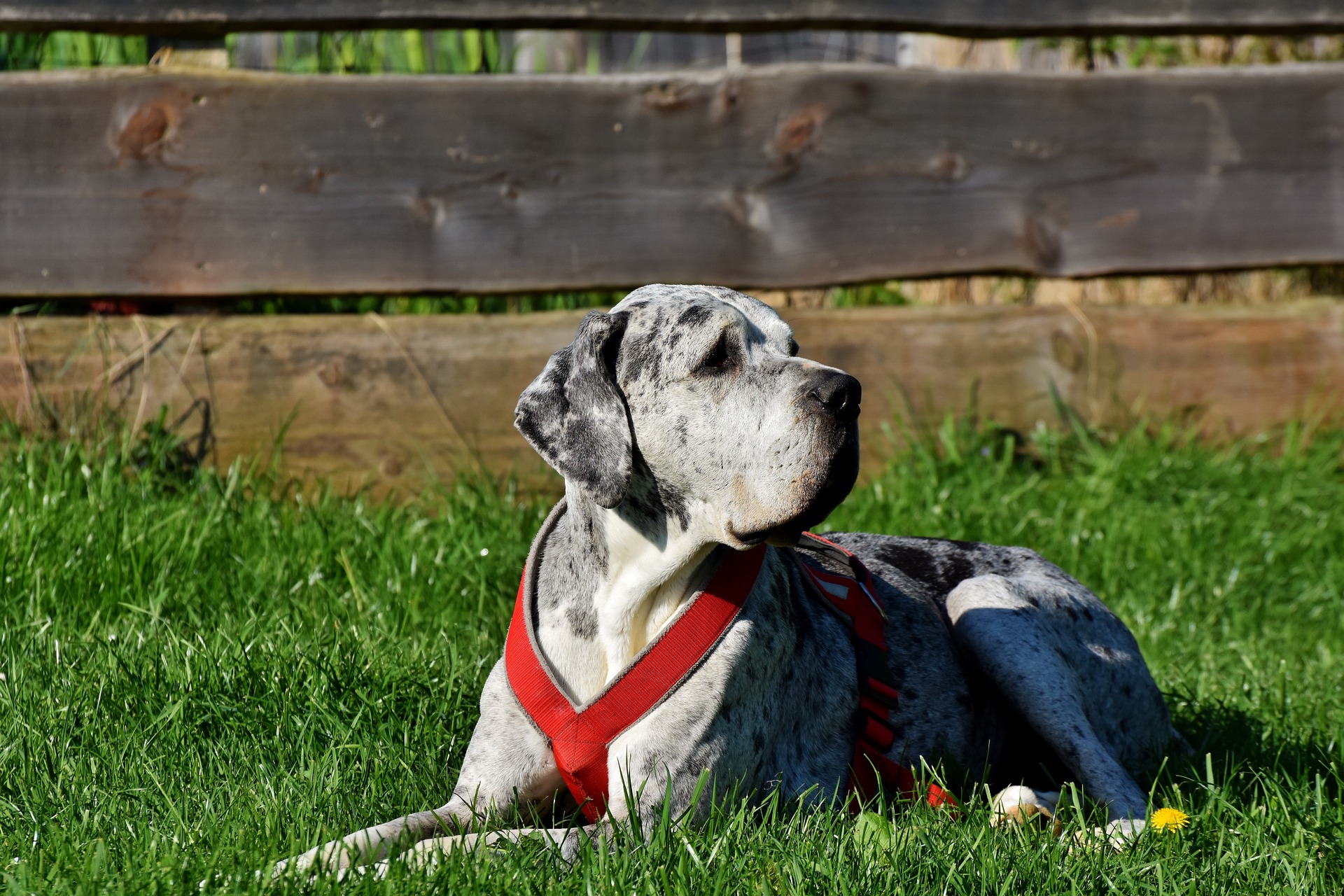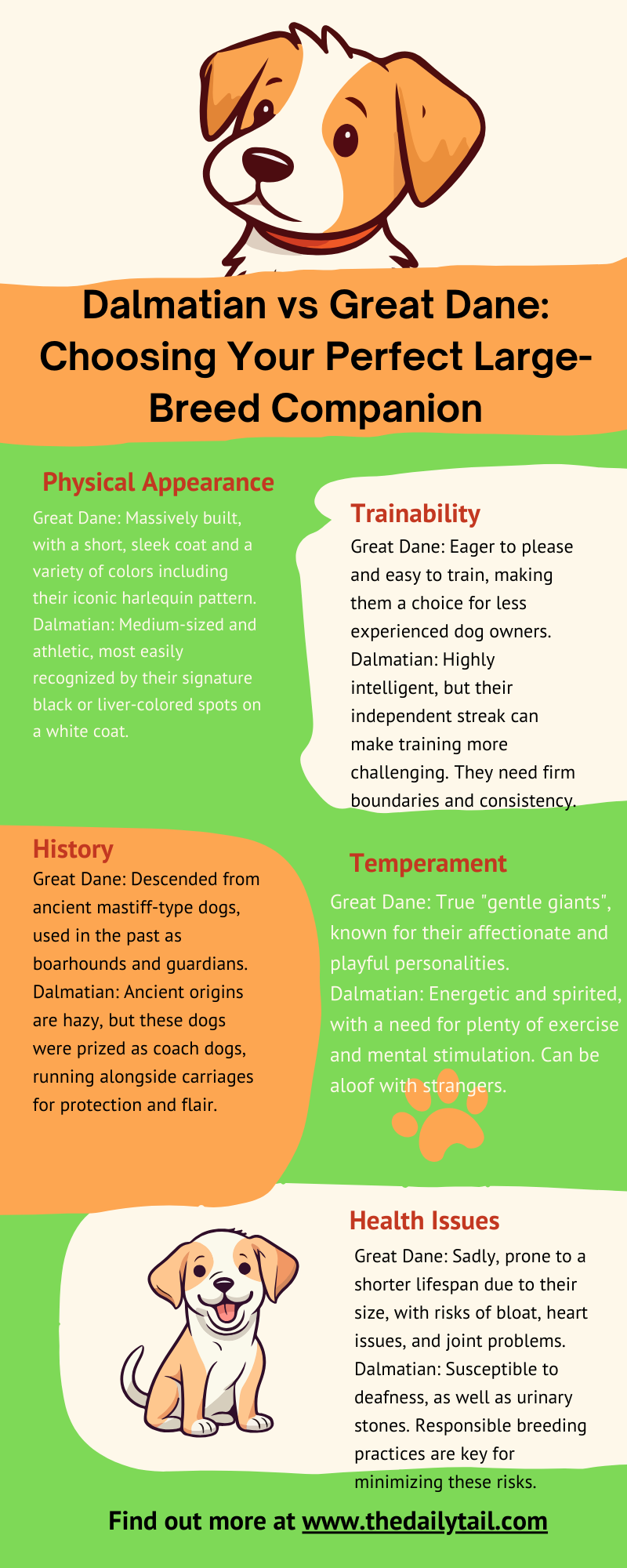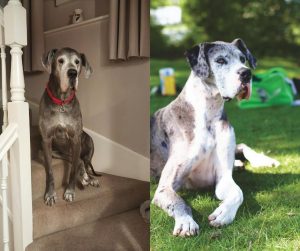I’ve always found it amusing how some of the dog world’s most iconic breeds couldn’t be more different. As a lifelong dog lover, I still get a kick out of seeing the regal spotted Dalmatian standing next to the comically oversized Great Dane. They’re both stars in their own right, but in very different ways!
If you’re looking for a larger-than-life dog, understanding the contrasts between these two spotted wonders is key. Let’s explore what makes the Great Dane and the Dalmatian so delightful in their own distinct ways.
Choosing between a Dalmatian and a Great Dane is like deciding between two icons of the canine world. On one hand, the Dalmatian, known for its distinctive spotted coat and energetic persona, fetches admiration with an enduring legacy as a firehouse mascot and a Disney movie star.
On the other, the Great Dane, dubbed the “Apollo of Dogs,” impresses with its majestic stature and a presence that blends grandeur with a gentle spirit. Both breeds have deep historical roots, with the Dalmatian having a storied past that dates back to its use as a carriage dog, and the Great Dane’s origins reflecting a blend of nobility and hunting prowess.
Dalmatians and Great Danes not only diverge in their history but also boast a tapestry of differences in their physical builds and temperaments. The Dalmatian’s athletic frame supports its high energy levels and need for regular exercise, while the Great Dane’s towering physique demands space but often houses a surprisingly calm and affectionate nature. Prospective pet owners weighing these breeds will consider factors like lifespan, health concerns, and the care required to ensure these dogs lead fulfilling lives as family companions.
Let’s take a deeper look into the Dalmatian vs Great Dane breed comparison. Let me help you make an informed decision about which canine is a better choice for your household.
Key Takeaways
- Dalmatians and Great Danes are iconic breeds with unique histories and personalities
- Physical and temperamental differences are notable between the two, affecting care and suitable living environments
- Choosing the right breed depends on an individual’s lifestyle, space, and capacity to meet the dogs’ needs
Breed Origins and History
The Dalmatian has an intriguing past that hails from Croatia, specifically the historical region of Dalmatia. These spotted dogs have been companions to humans for centuries. It’s believed their lineage includes breeds of pointers and possibly an early version of the spotted Great Dane. They’ve worn many hats through history, from hunting to herding, but they’ve also strutted alongside carriages, earning the nickname ‘coach dog’.
On the other paw, the Great Dane dog breed is a gentle giant with its roots stretching back to Germany. They might be known as ‘German Mastiffs’—a nod to their strength and size. Historically, Great Danes served as hunting dogs for large prey, thanks to their impressive stature and power, but they transitioned into beloved guardians of home and family. Both are recognized by the American Kennel Club.
| Trait | Dalmatian | Great Dane |
|---|---|---|
| Origin | Dalmatia, Croatia | Germany |
| History | pointers and spotted Great Danes | hunting large game |
| Use | hunting, herding, coach dogs | hunting, guarding |
These breeds have evolved from their working backgrounds to become affectionate members of the family. While their ancestors may have been bred for specific purposes, today they are more likely to chase balls in the backyard than herd or hunt. Yet, their historical roles have left a mark on their personalities and needs, making their storied pasts an important piece of understanding these loyal companions.
Physical Characteristics
When it comes to Dalmatians and Great Danes, their physical presence is marked by striking differences in their stature and coat. Let’s break down these traits to see how they set each breed apart.
Size: Height and Weight
Dalmatians are medium-sized dogs with a range in height of 22-24 inches and they typically weigh between 45 and 70 pounds. They’re built to be active and have a well-muscled body. On the other side, the massive Great Danes tower over many other breeds with their impressive height of 26-34 inches, and they carry a weight that can fall anywhere from 110 to 200 pounds. They possess a powerful physique that combines grace and strength.
To illustrate:
- Great Dane
- Height: 26-34 inches
- Weight: 110-200 pounds
- Dalmatian
- Height: 22-24 inches
- Weight: 45-70 pounds
Coat Type and Markings
The coat of a Dalmatian breed is short, sleek, and glossy. They are celebrated for their unique, eye-catching spotted coat, which can be either black or liver on a white background. Each spot is distinctively spaced and adds to their distinctive and instantly recognizable appearance.
In contrast, Great Danes have a similarly short and smooth coat, but it can come in a wider variety of colors, including fawn, brindle, blue, black, and harlequin. Harlequin Great Danes sport a white base coat with irregular black patches scattered across, which can sometimes bear a resemblance to the Dalmatian’s spots, but on a much larger scale.
Both breeds require regular grooming to keep their coats in good condition, but their grooming needs are relatively low compared to long-haired breeds.
Personality and Temperament
When you’re bringing a new dog into your home, understanding their personality and temperament is key to a happy coexistence. Let’s explore what makes Dalmatians and Great Danes unique, especially how their inherent traits play out in a family setting.
Behavioral Traits
Dalmatians are renowned for their boundless energy and intelligence. They are the type of dog that thrives on attention and activity, often exhibiting a playful and loving demeanor. Their friendly nature makes them great companions, but they do require consistent training to channel their energy positively.
On the other hand, Great Danes are gentle giants with a calm and affectionate temperament. Despite their imposing size, they are often loving and want nothing more than to be part of the family. Great Danes are known for being patient and friendly, but due to their size, they should be supervised around very small children.
Suitability with Families and Pets
When it comes to fitting in with families, both breeds have a lot to offer. Dalmatians are highly family-friendly and can integrate well with children, providing the play and the structure they need. However, due to their energetic nature, they may be better suited for families with slightly older kids who can interact more safely and responsibly with them.
Great Danes are also wonderful family pets. They are typically good with children, often acting as a protective and patient member of the household. Although their large size can be intimidating, with proper introduction and training, they often get along well with other pets too.
Both breeds require attention and affection to be at their happiest. Regular family interactions and activities can help these breeds feel loved and integrated. Whether it’s a Dalmatian’s lively spirit or the Great Dane’s loving calmness, these dogs can make wonderful additions to the right homes.
Health and Lifespan Concerns
When it comes to the Dalmatian and Great Dane, potential owners should be aware of certain breed-specific health issues and life expectancy. Like all dogs, they both have unique health challenges and lifespans that should be considered carefully.
Common Health Issues
Dalmatians and Great Danes are prone to several health conditions that prospective owners should watch for.
- Dalmatians: They can suffer from urolithiasis (stone formation), deafness, and skin allergies. A distinctive concern for Dalmatians is their tendency to form urinary stones due to their unique urinary system
- Great Danes: Known for their gentle giant status, Great Danes are susceptible to cardiomyopathy (a heart condition), hip dysplasia, and bloat or gastric torsion. Due to their size, joint issues are particularly concerning for Great Danes
Ensuring regular veterinary check-ups and being attentive to their health needs can help manage these conditions.
Life Expectancy
The lifespan of a dog can often indicate the long-term commitment an owner is making to their pet.
- Dalmatians: Typically live between 11-16 years. They often enjoy a longer lifespan and with good care, can be a long-term companion
- Great Danes: On the shorter end, they average 8-10 years. Some may live longer with exceptional care, but due to their size, their lifespan is generally shorter than smaller breeds
Owners can influence their pets’ longevity with proper nutrition, regular exercise, and prompt medical attention to any health issues.
Care and Management
When considering a Dalmatian vs Great Dane, prospective pet owners should focus on each breed’s unique exercise, grooming, and dietary needs. Both breeds thrive with the right care, which helps them lead happy and healthy lives.
Exercise Needs
Dalmatians are energetic and need regular exercise to maintain their health. They benefit from:
- At least 2 hours of exercise daily
Great Dane dogs are also active, but their exercise should be managed to prevent health problems like bloat. They require:
- A minimum of 2 hours of exercise each day, but avoid overly strenuous activities right after meals
Grooming Requirements
Dalmatian:
- Grooming needs: Moderat
- Shedding: Year-round, so regular brushing is helpful
Great Dane:
- Grooming needs: Medium – They should be groomed every 3-4 weeks
- Shedding is less of an issue, but they still require regular coat maintenance
Dietary Considerations
Dalmatians:
- Require a diet low in purines to prevent health issues like urinary stones
- Regular meals to support their active lifestyle
Great Danes:
- Prone to bloat, so small frequent meals are recommended
- A well-balanced diet to match their size and energy level
Training and Socialization
When it comes to training, both the Dalmatian dog breed and the Great Dane breed have their quirks. Dalmatians are intelligent and quick learners, but they can be a bit stubborn. Consistent and patient training is key. They respond well to positive reinforcement—think treats and praises when they follow commands. They’re smart enough to pick up what you’re asking them to do; it’s just a matter of them deciding to do it!
Great Danes, on the other hand, may not be as headstrong, but due to their size, they require early obedience training to ensure they’re manageable as they grow. Great Danes are also smart, but they need a gentle hand as they can be sensitive to harsh tones. Here’s a concise comparison:
| Aspect | Dalmatian | Great Dane |
|---|---|---|
| Trainability | High but may be independent at times. | High, with a gentle yet firm approach needed. |
| Intelligence | Smart, figures things out quickly. | Smart, but can be sensitive. |
| Socialization | Needs plenty of exposure to be social. | Early socialization recommended to manage size. |
| Positive Reinforcement | Responds well to treats and praise. | Also responds well; kindness is key. |
Socialization is vital for both breeds to prevent any aggressive tendencies and to ensure they’re well-adjusted, social dogs. They should be introduced to different people, pets, and environments from a young age. This exposure helps them to be well-socialized and comfortable in various situations. You can also combine mental stimulation with dog training to get a more obedient dog.
Here is a fun fact. The Great Dane breed is part of the working dog group by the American Kennel Club. And the Dalmatian, despite being more sporty, is part of the non-sporty group by the AKC.
In summary, one might say that the Dalmatian is like the smart, sometimes aloof teenager, while the Great Dane is the sensitive soul, gentle but unaware of their size. Both need a loving, patient, and consistent trainer to thrive.
Suitability for Living Spaces
When thinking about welcoming a Dalmatian or Great Dane into a home, one needs to consider the space available. These breeds have vastly different requirements when it comes to their living conditions.
Dalmatians have a relatively high energy level and need a fair amount of exercise, not unlike their spotted compatriots in the firefighter brigade. They are well-suited for homes with a bit more room, including a yard where they can run and play. However, they can adapt to apartment living provided their exercise needs are met through daily walks and playtime.
In contrast, Great Danes, despite their grand size, have a rather low energy level in adulthood. While they may seem like a tight fit for smaller spaces due to their towering frame, they can be quite content in an apartment setting as long as they have room to stretch out and are taken for regular walks. It’s like having a gentle giant as a roommate who’s happy to lounge around but needs their space.
For families or individuals living an active lifestyle, Dalmatians could be a great match as they’ll thrive with more activity and engagement. On the other side, Great Danes can fit into a less active lifestyle, perhaps for someone who enjoys leisurely strolls more than a brisk jog.
| Breed | Space Needed | Energy Level | Exercise Needs | Lifestyle Fit |
|---|---|---|---|---|
| Dalmatian | Medium to Large | High | High (Daily walks) | Active |
| Great Dane | Medium | Low to Moderate | Moderate (Regular walks) | Less active/laid back |
Living conditions should match a dog’s nature. While a yard is always a bonus for any breed, Dalmatians and Great Danes can indeed be happy without one, as long as their needs are understood and met. A happy home is where these dogs can thrive—the size of the space is just a part of the equation.
Dalmatian and Great Dane Comparison
When they’re by your side, Dalmatians and Great Danes make a pavement-pounding pair that can turn heads. These two dog breeds have their own special charm, but they also have quite a few differences.
Size Matters: Just seeing them together, size is the first thing that strikes you. Great Danes tower over most dogs, and definitely over Dalmatians. A male Great Dane can stand 26-34 inches tall, weighing a hefty 110-200 pounds. Dalmatians are more petite, with a height of 19-24 inches and they tip the scales at a lighter 45-70 pounds.
Lifespan and Health: Dalmatians tend to hang around a bit longer, with a lifespan of 11-16 years, while Great Danes have a shorter expectancy of about 7-10 years. Both breeds have certain genetic health issues they’re prone to, so a good vet is a must.
Exercise and Space: Dalmatians have energy to spare, needing around 2 hours of exercise every day. Meanwhile, Great Danes, despite their size, tend to be more laid-back and don’t require quite as much exercise. Regardless, they both love a good stretch of the legs, so ample space and time for exercise are key.
| Feature | Dalmatian | Great Dane |
|---|---|---|
| Height | 19-24 inches | 26-34 inches |
| Weight | 45-70 pounds | 110-200 pounds |
| Lifespan | 11-16 years | 7-10 years |
| Exercise | 2 hours a day | Less than Dalmatians |
| Temperament | Loyal, intelligent, friendly | Gentle giants, friendly, less active |
Finally, if you’re thinking about which pooch might suit your lifestyle, consider the Dalmatian’s enthusiastic nature and the calm dignity of a Great Dane. Both breeds have a friendliness to them that makes them great companions, but their exercise needs and space requirements are important to factor in. And if you are in for something unique, you can always try finding a Great Dane Dalmatian mix, right?

